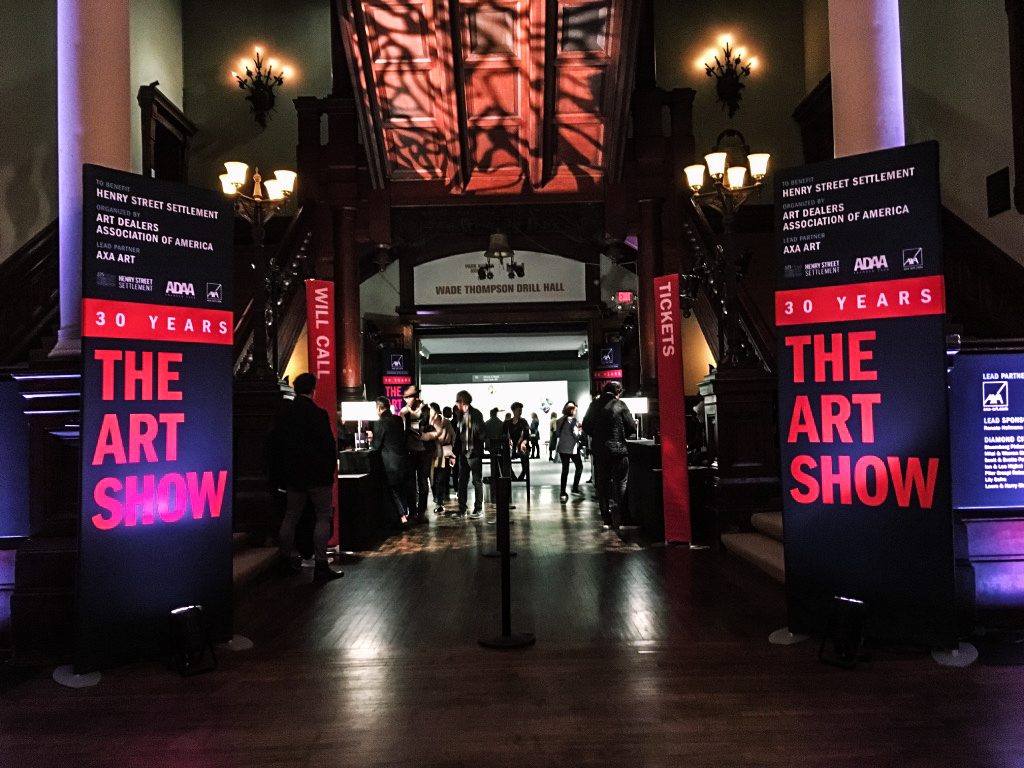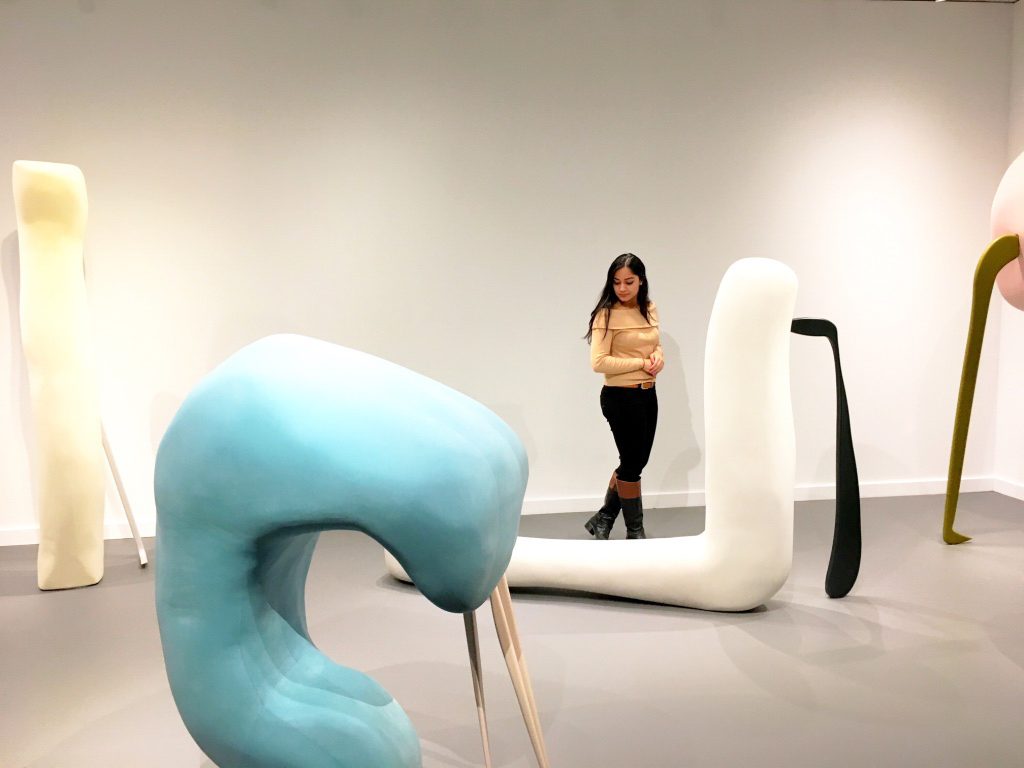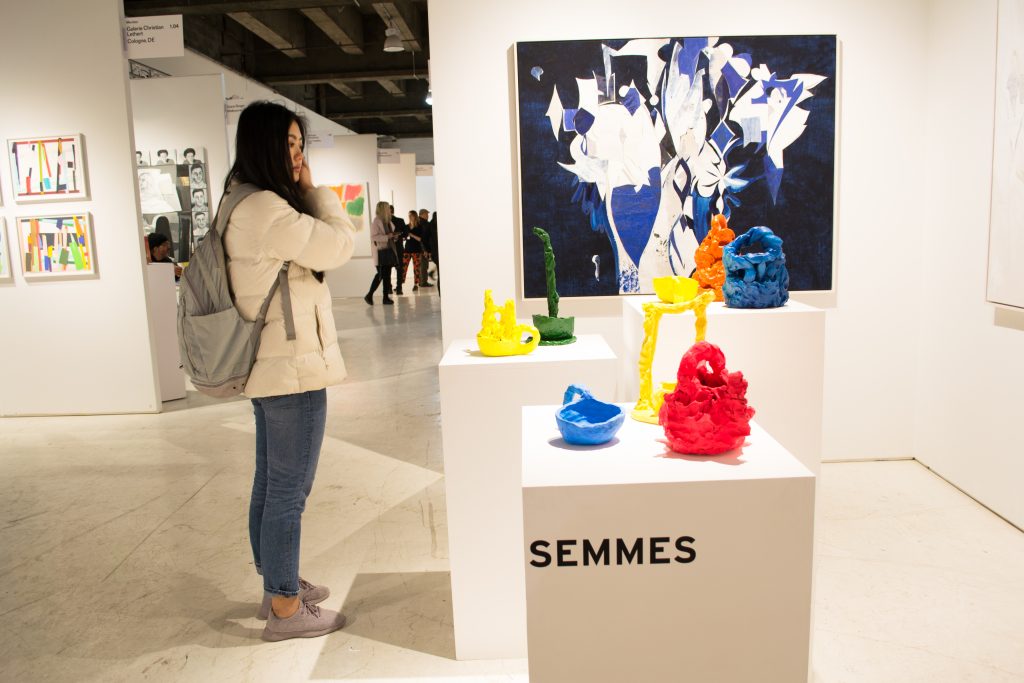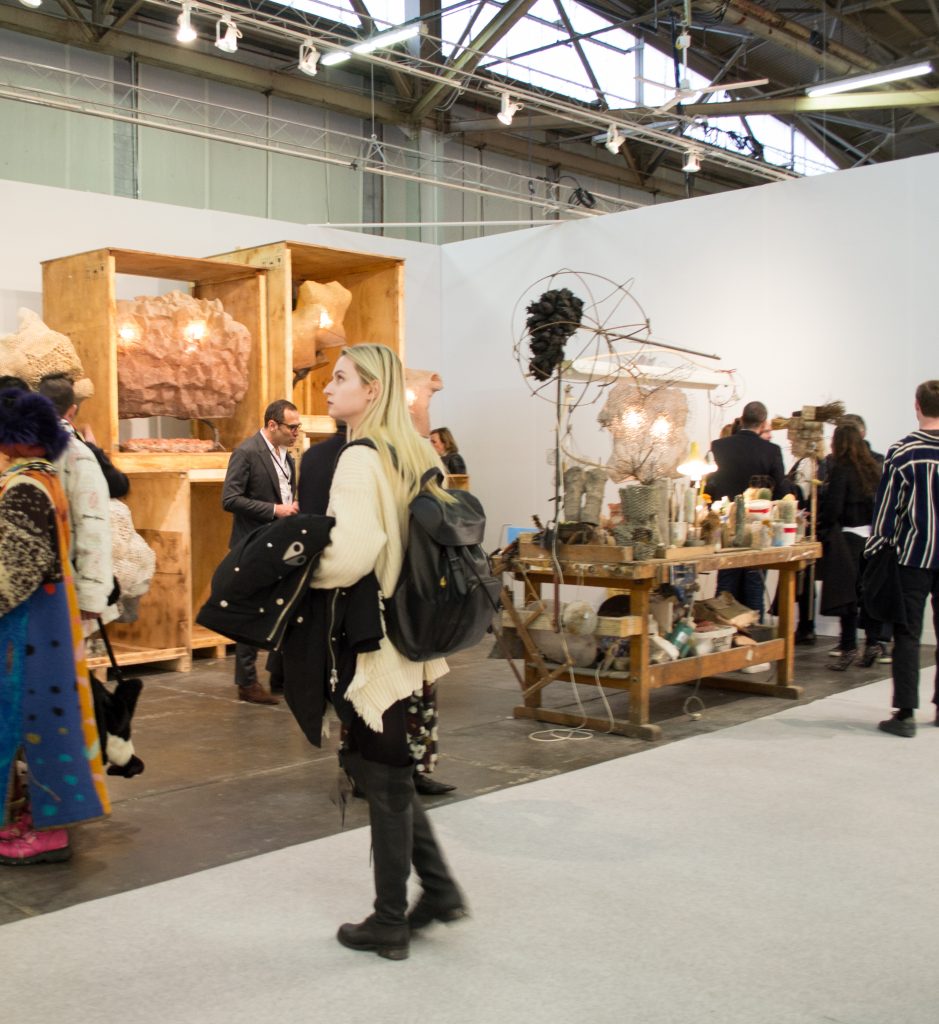The art fairs in New York City are akin to marathons—-rigorously organized, thoroughly exhaustive. While it may be possible to dart through them in one day, seeing all of it can feel laborious – not to mention the energy required to cover more than one fair in a day. For the past two weeks in Linda Norden’s seminar, the BFA class took on such feats with the ADAA, NADA, Armory Show, the Independent, and for a few of us, the SPRING/BREAK Art Show. The kinds of art fairs I had previously enjoyed have been along the lines of the Seoul Art Toy Culture Fair and Seoul Illustration Fair—mostly playful celebrations of emerging artists, filled with activities and artist booths in a festival style. The first New York City fair we visited together, the ADAA (Art Dealers Association of America) show at Park Avenue Armory, was altogether a drastically different experience. It was smaller, more polished, quiet, spacious with carpeted walkways, and the atmosphere seemed to boast of teeming art business. Gallery representatives, collectors and arts professionals gathered intimately in their private world, discussing among themselves the shown artworks and collectibles. The ADAA Art Show is distinct from the others we visited in that it includes a selection of works from the 19th-21st century, and both national and international works are exhibited. It was clear to see its desire to appeal to a circle of present and potential participants, and so we found ourselves with ample time to observe for ourselves before interacting with any of the gallerists.


The following week, we visited NADA and The Armory Show. NADA is one of the fairs focused on displaying contemporary art, primarily with emerging artists. Considering its inclusion of over 100 exhibitors, there was a broad range of work present which allowed visitors to work through sculptural, print, painting, drawing, digital and interactive, mixed medias. Gallerists were very cordial and willing to engage in conversation with the crowd, and the fair was bubbling with performance right outside of the designated fair space.

The Armory Show at Piers 92 and 94, while in content may have sometimes leaned towards the contemporary, politically oriented works seen the NADA Fair, felt quieter and once again slightly more unapologetic about selling and catering to a specific audience. The individual gallery exhibition spaces were in less proximity to one another than at the NADA fair, clearly divided, and spaciously separated and oriented facing the passing visitors rather than in reference to each other. Within its high energy atmosphere, the space and sizes of the works themselves might easily begin to feel overwhelming. Reputable as the largest annual international art fair, the Armory Show certainly was an impressive event.

Some of us went to the Independent and Spring Break in the following days — they were two fairs that I personally found to be much more enticingly organized, both in content and display. The Spring Break Fair, especially, held highly political works that were kookily but meticulously curated, in compact and more intimate rooms surrounding center spaces reserved for performance and other media. These several visits to the New York City fairs helped form our understandings of the different functions and exchanges that exist within these large events, between the public and professionals in the art world. There is much more to be said concerning its advantages, disadvantages– how it might serve to batter in copious amounts of visual material into our minds and cater to our palate, or only draw in specific individuals while creating a cold, glossy barrier over the works we would normally appreciate further if not in these settings. I am interested to see how the notion of the art fair and its role might be expanded or pushed to serve different audiences in different spaces, as well as to create positive atmospheres and effects through careful curation and selection of relevant works.
